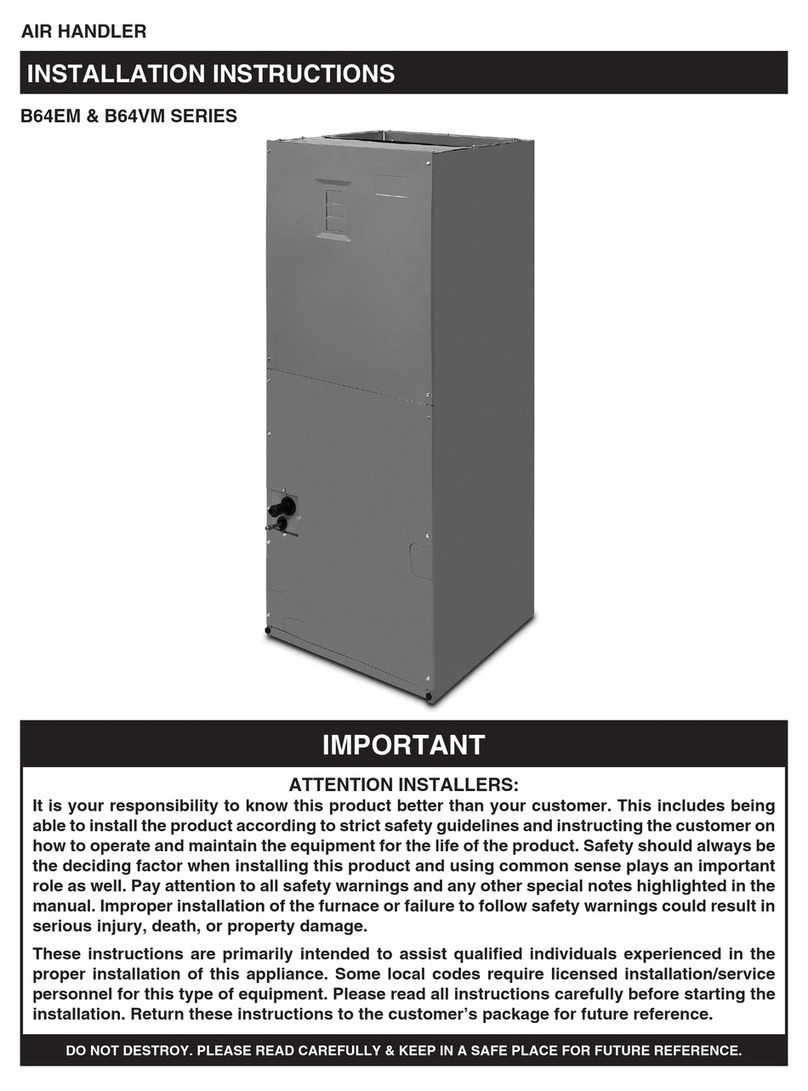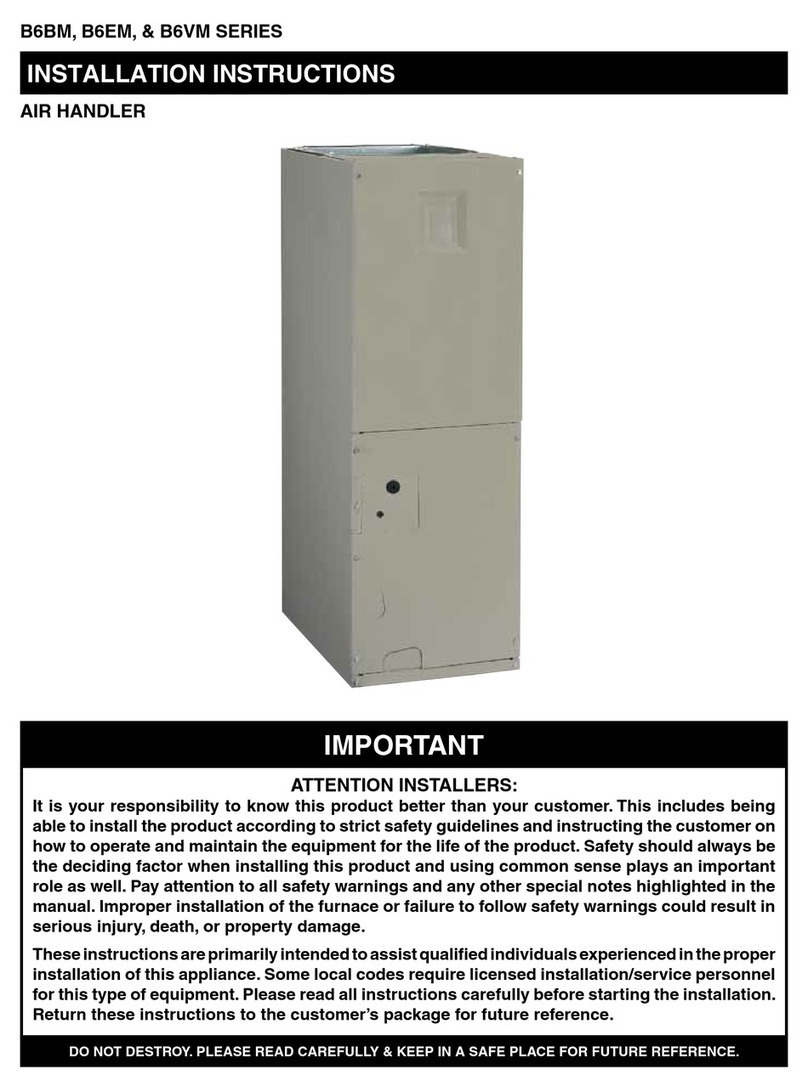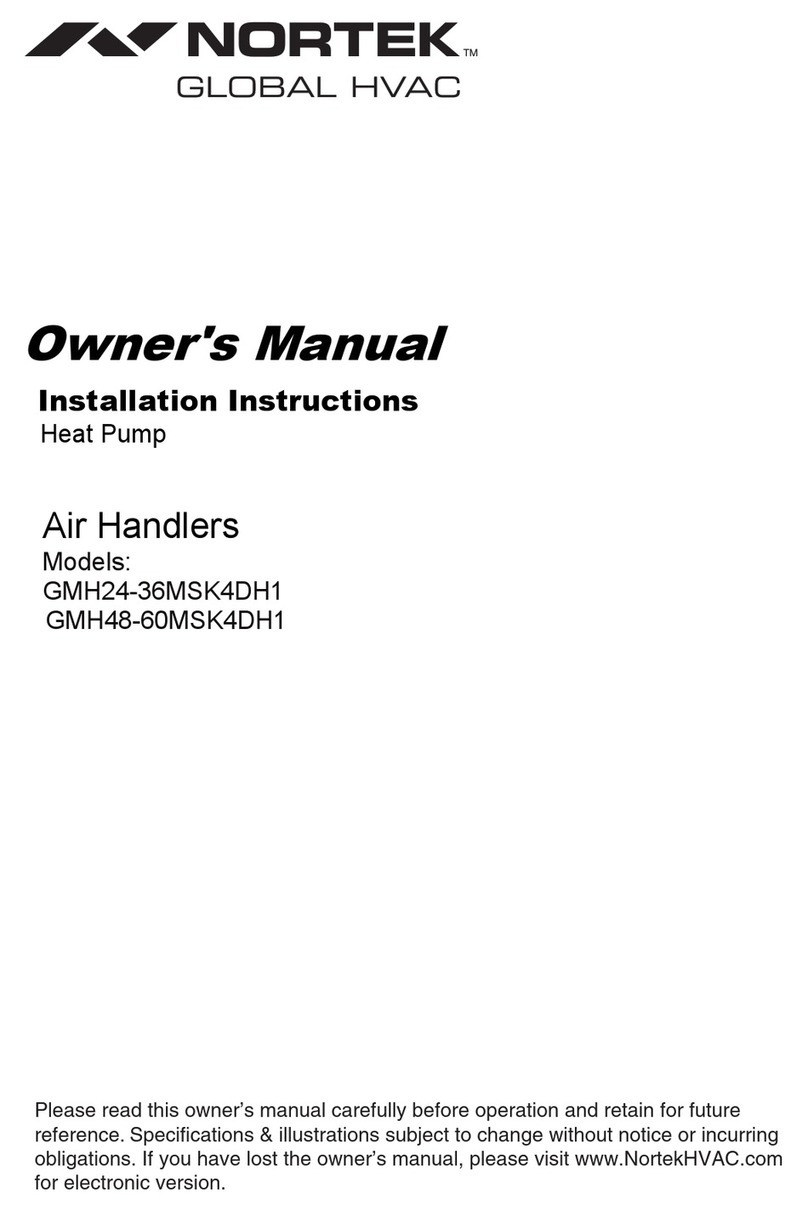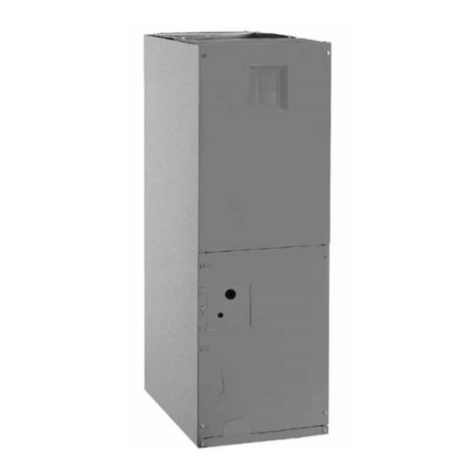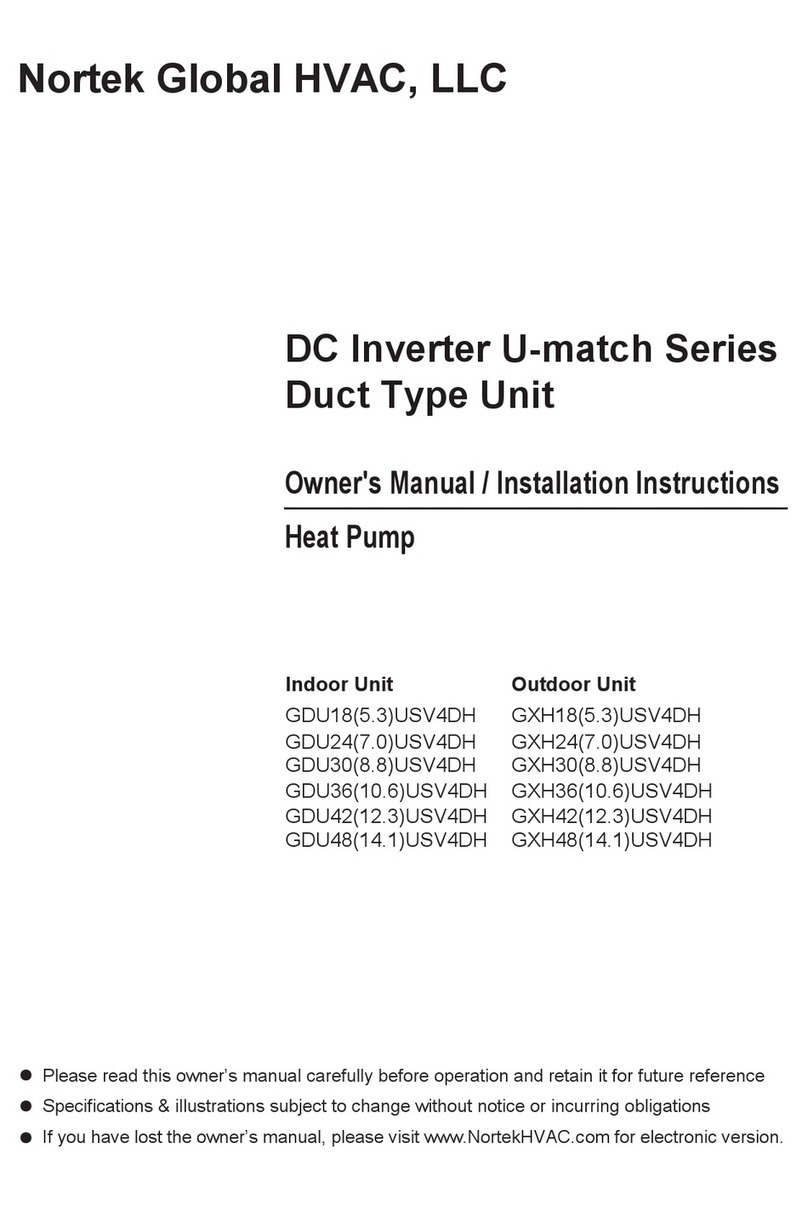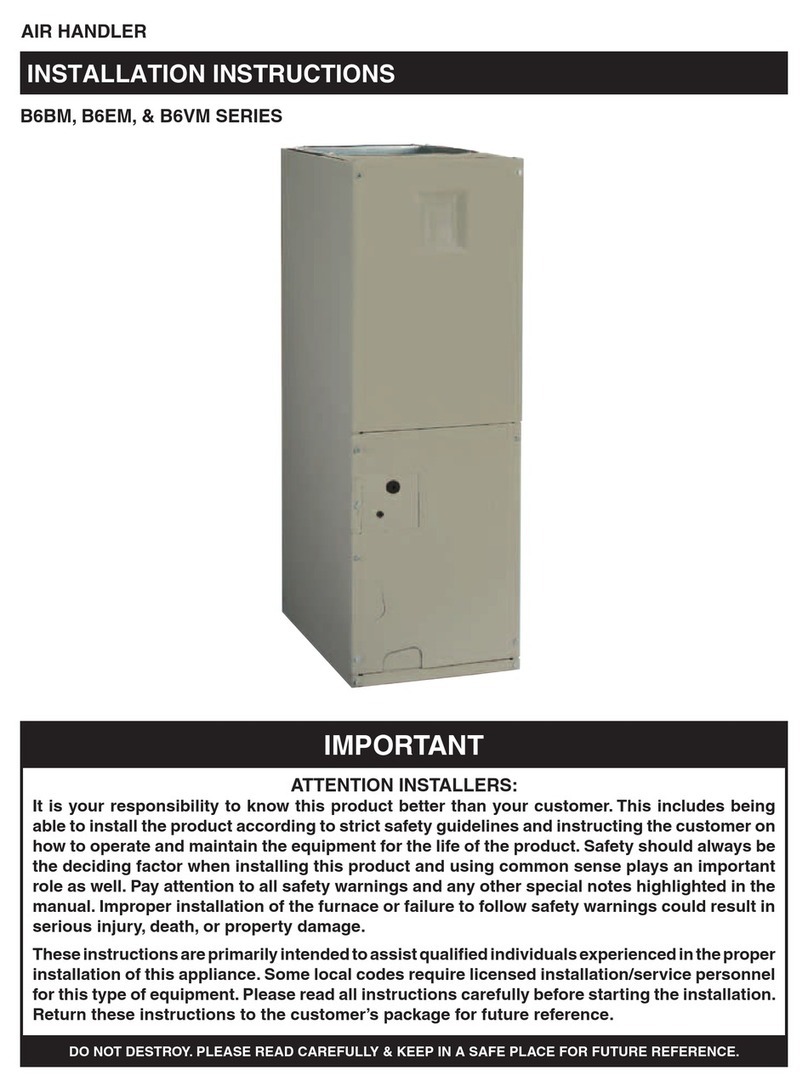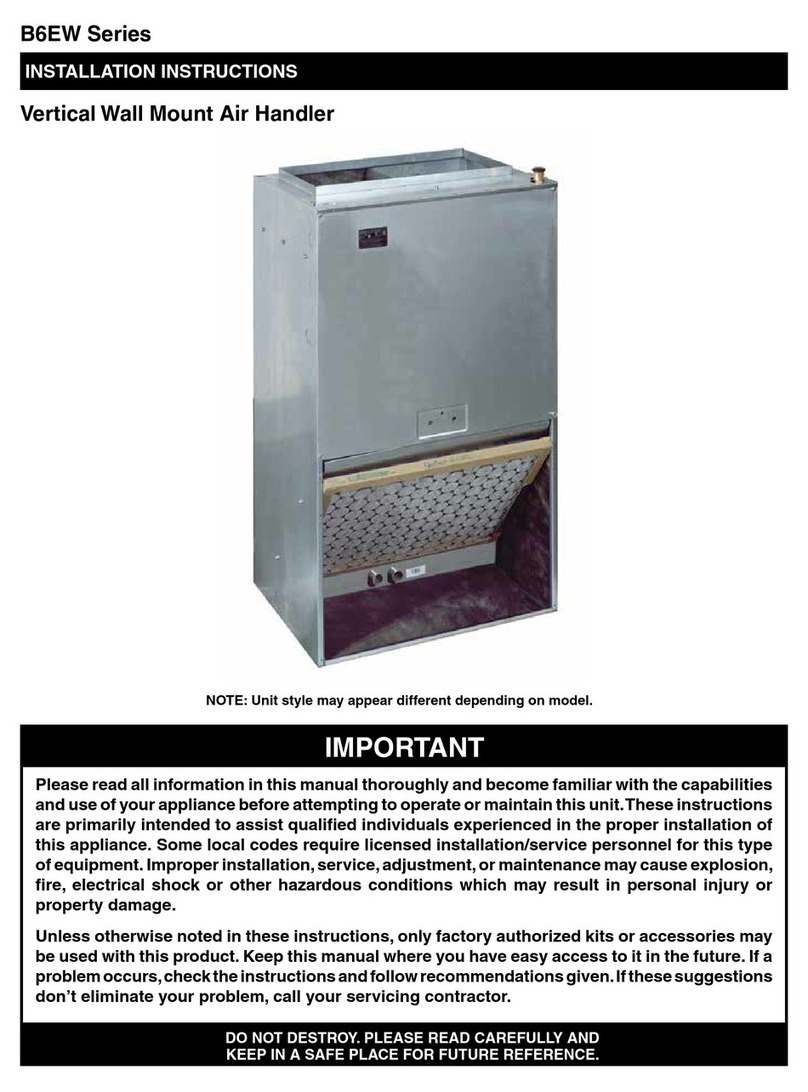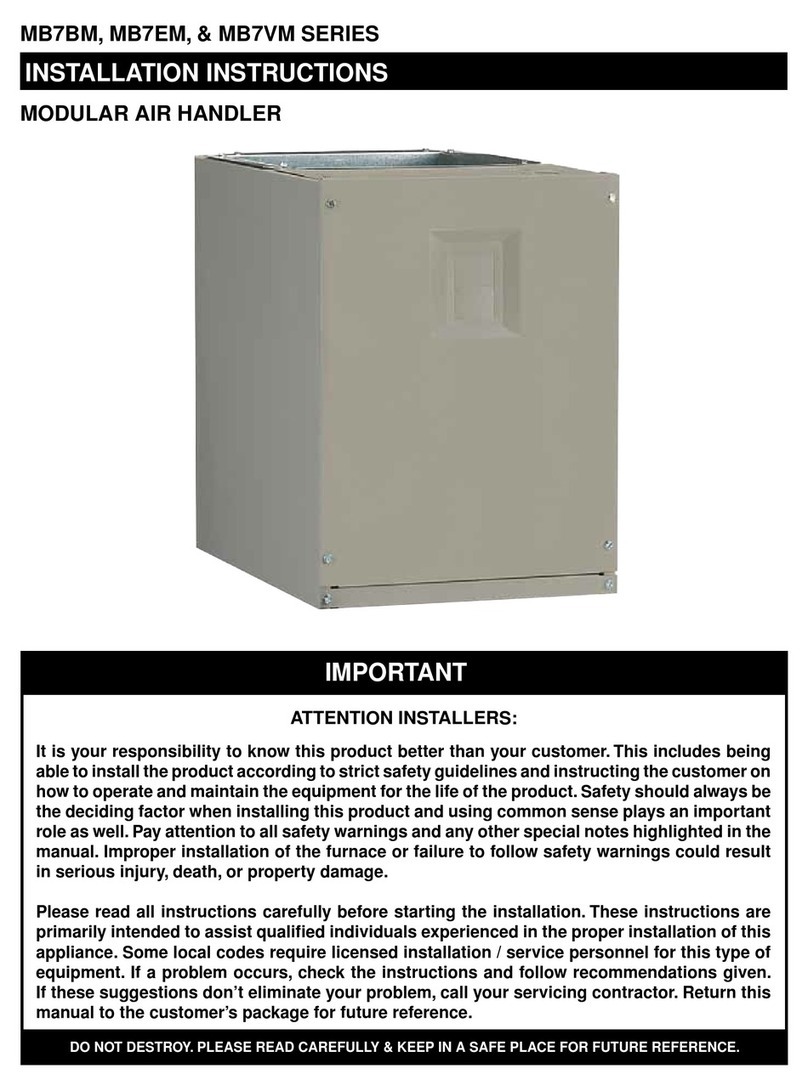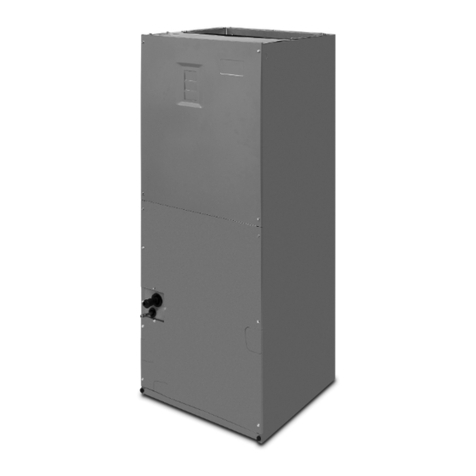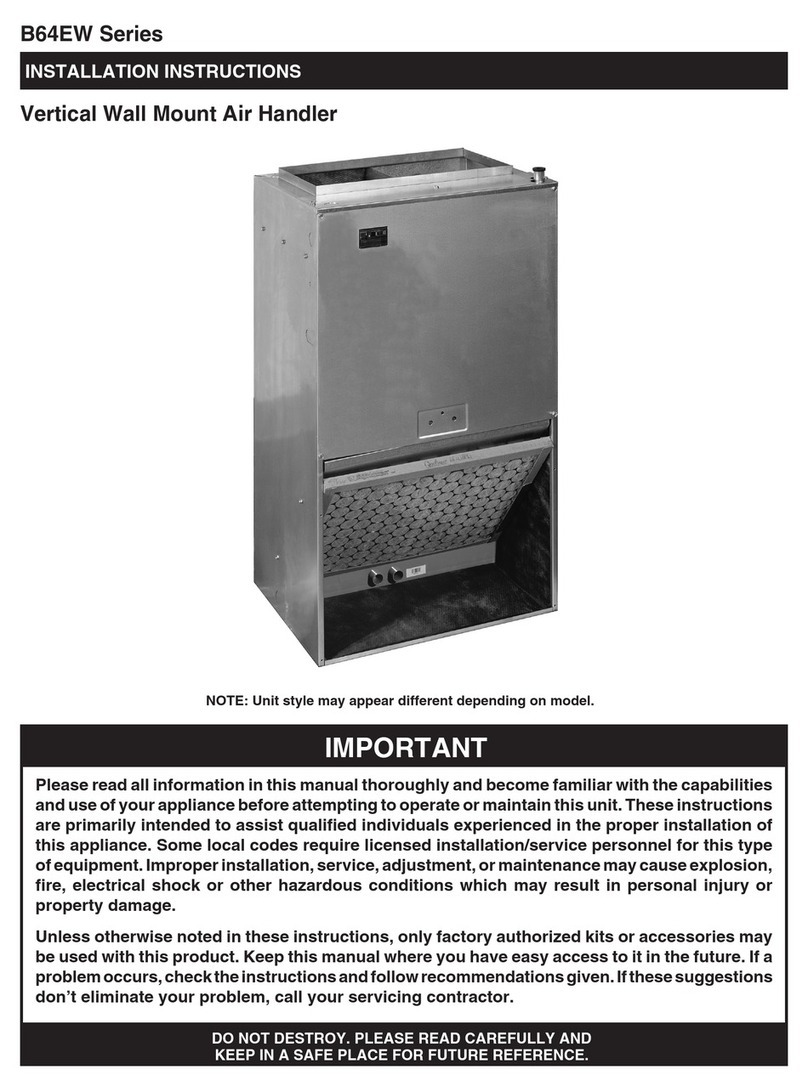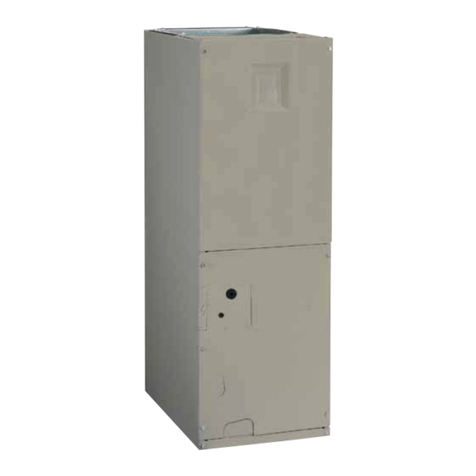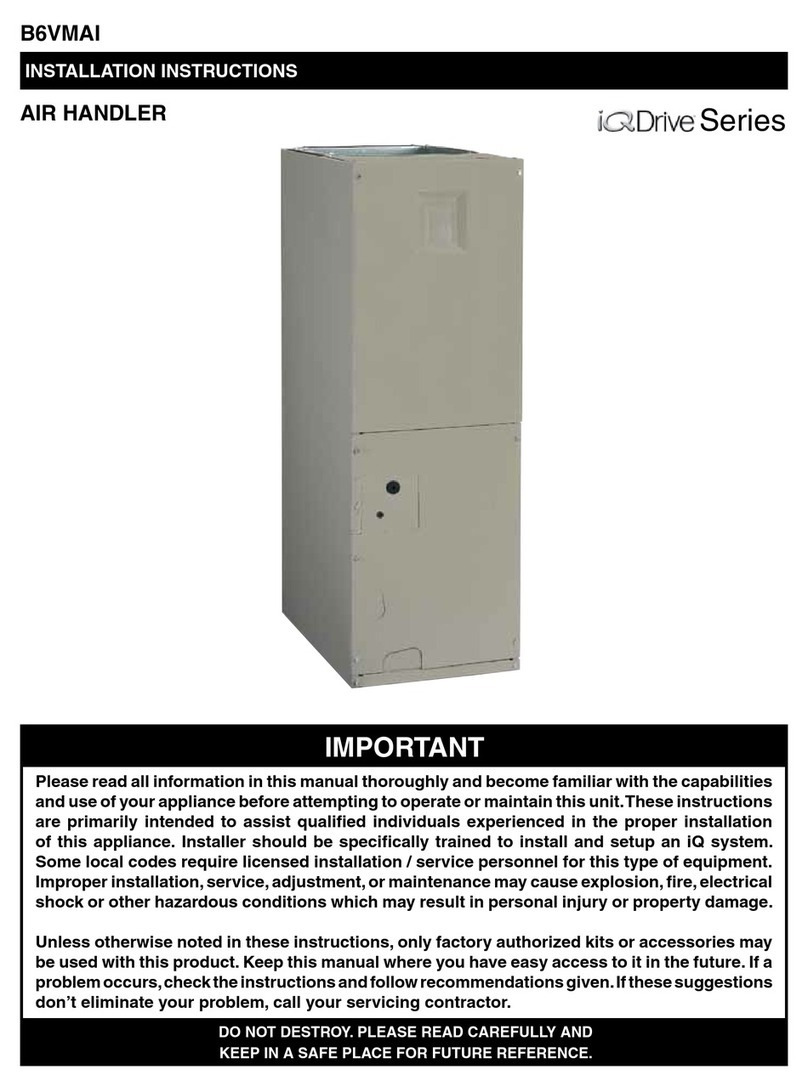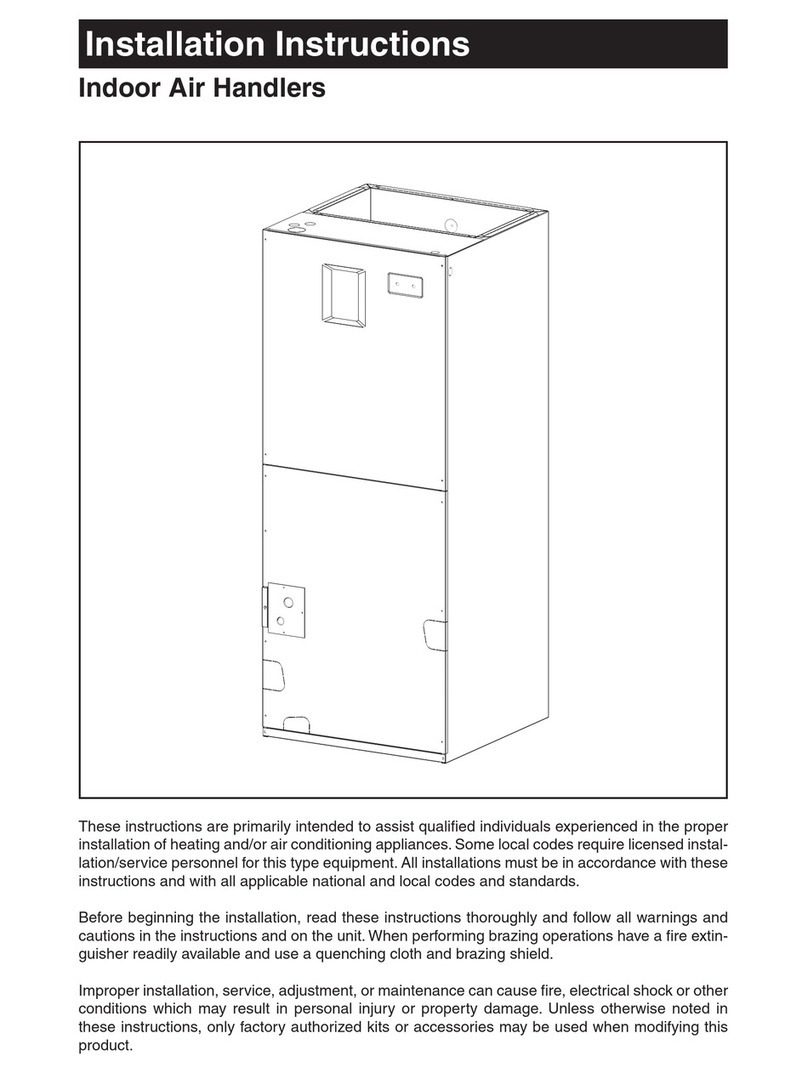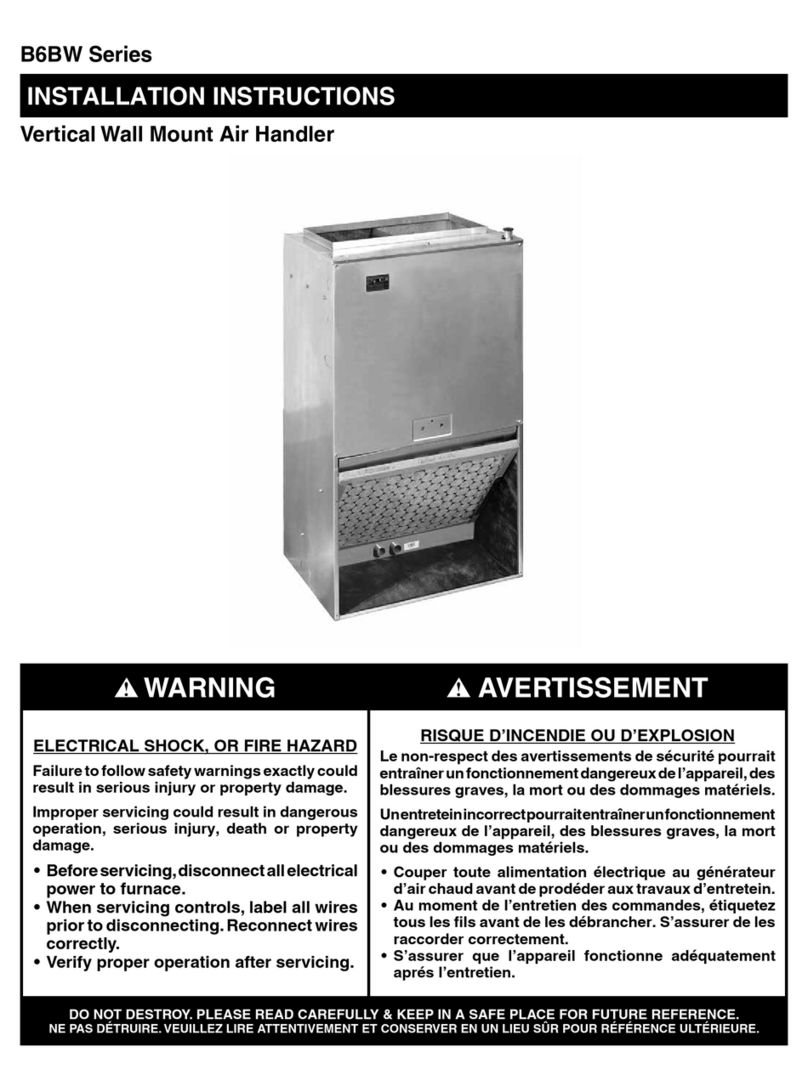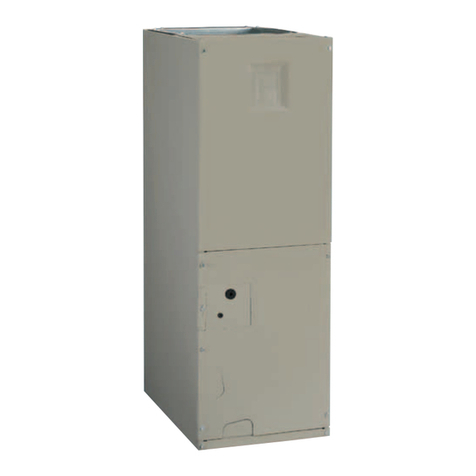
5
track the long-term affects of air handler usage during
construction.Proofofthissubmittalshallbeavailablefor
thefinalinspectionoftheairhandlerpriortooccupancy.
Installation in a Garage
WARNING:
Donotplacecombustiblematerialsonoragainst
the cabinet. Do not place flammable materials,
(gasoline, paint thinners, etc.) or any other
flammable vapors and liquids, in the vicinity
of the air handler.
TheB6Seriesairhandlermaybeinstalledinaresidential
garage with the provision that the unit must be located or
protected to prevent physical damage by vehicles.
• Seal all connections and joints with industrial grade
sealingtapeorliquidsealant.Requirementsforsealing
ductwork vary from region to region. Consult with local
codes for specific requirements.
Unconditioned Spaces
All duct work passing through unconditioned space must
beproperlyinsulatedtominimizeductlossesandprevent
condensation.Use insulation with an outer vapor barrier.
Refer to local codes for insulation material requirements.
Air Filters
B6 Series Air Handlers are not supplied with an air filter
whenshippedfromthefactory.Theinstaller must provide
ahighvelocityfilterthatisappropriatelysizedtothereturn
air duct opening or filter rack located in the bottom of the
unit. Accessing the filter does not require tools and can
beremovedfromthefrontoftheunitbyremovingthefilter
door.See Unit Maintenance (page 15) for filter sizes and
installation information.
WARNING:
Never operate the air handler without a filter
or with doors removed. Dust and lint can build
up on internal components,resulting in loss of
efficiency,equipmentdamage,andpossiblefire.
Acoustical Duct Work
• Certaininstallationsmayrequiretheuseofacoustical
lininginsidethesupply duct work.Acousticalinsulation
mustbe inaccordancewithall national andlocalcodes
forduct liners.Ductlining mustbe ULclassifiedbatts or
blankets with a fire hazard classification of FHC-25/50
or less.
• Fiberductworkmaybeusedinplaceofinternalduct
liners if the fiber duct work is in accordance with all
nationalandlocalcodes.Fibrousductworkandinternal
acoustical lining must be NFPA Class 1 air ducts when
tested per UL Standard 181 for Class 1 ducts.
• Dampingducts,exiblevibrationisolators,orpleated
media-style filters on the return air inlet of the air
handler may be used to reduce the transmission of
equipment noise eminating from the air handler.These
treatmentscanproduceaquieterinstallation,particularly
in the heated space. However, they can increase the
pressure drop in the duct system. Care must be taken
to maintain the proper maximum pressure rise across
the air handler, temperature rise and flow rate. This
maymean increasing the duct sizeand/orreducingthe
blower speed.These treatments must be constructed
and installed in accordance with all national and local
codes.Forbestsoundperformance,besuretoinstallall
theneededgasketsandgrommetsaroundpenetrations
into the air handler, such as for electrical wiring.
Plenums & Air Ducts
WARNING:
All return ducts must be secured to the air
handler using appropriate methods. All return
ducts must be adequately sealed.When return
air is provided through the bottom of the unit,
the joint between the air handler and the return
air plenum must be air tight.
Returnairand circulatingairducts mustnotbe
connected to any other heat producing device
such as a fireplace insert, stove, etc.This may
result in fire, explosion, carbon monoxide
poisoning,personalinjury,orpropertydamage.
• Supplyandreturnairmustbedeliveredtotheairhandler
by duct(s) secured to the air handler casing, running
full size and without interruption.
• Thisunitisdesignedonlyforusewithareturnandsupply
duct.The return air duct must have the same free area
as the opening provided on the air handler.The ducts
should be appropriately sized to the capacity of the air
handlertoensureitsproperairflowrating.Table3(page
18)contains the maximumairflowdatalisted by model.
• Use transition ttings if the supply and/or return air
openings of the unit do not match the duct openings.
Thesetransitionsshouldbedimensionedinaccordance
with standard practice as specified in the ASHRAE
recommendations for duct transitions.
• Flexible connectors may be used between the unit
and the ductwork to prevent transmission of vibration
from the unit to the structure. If electric heater kits are
installed, heat resistant material must be used for the
flexible connector at the supply air end of the unit.
